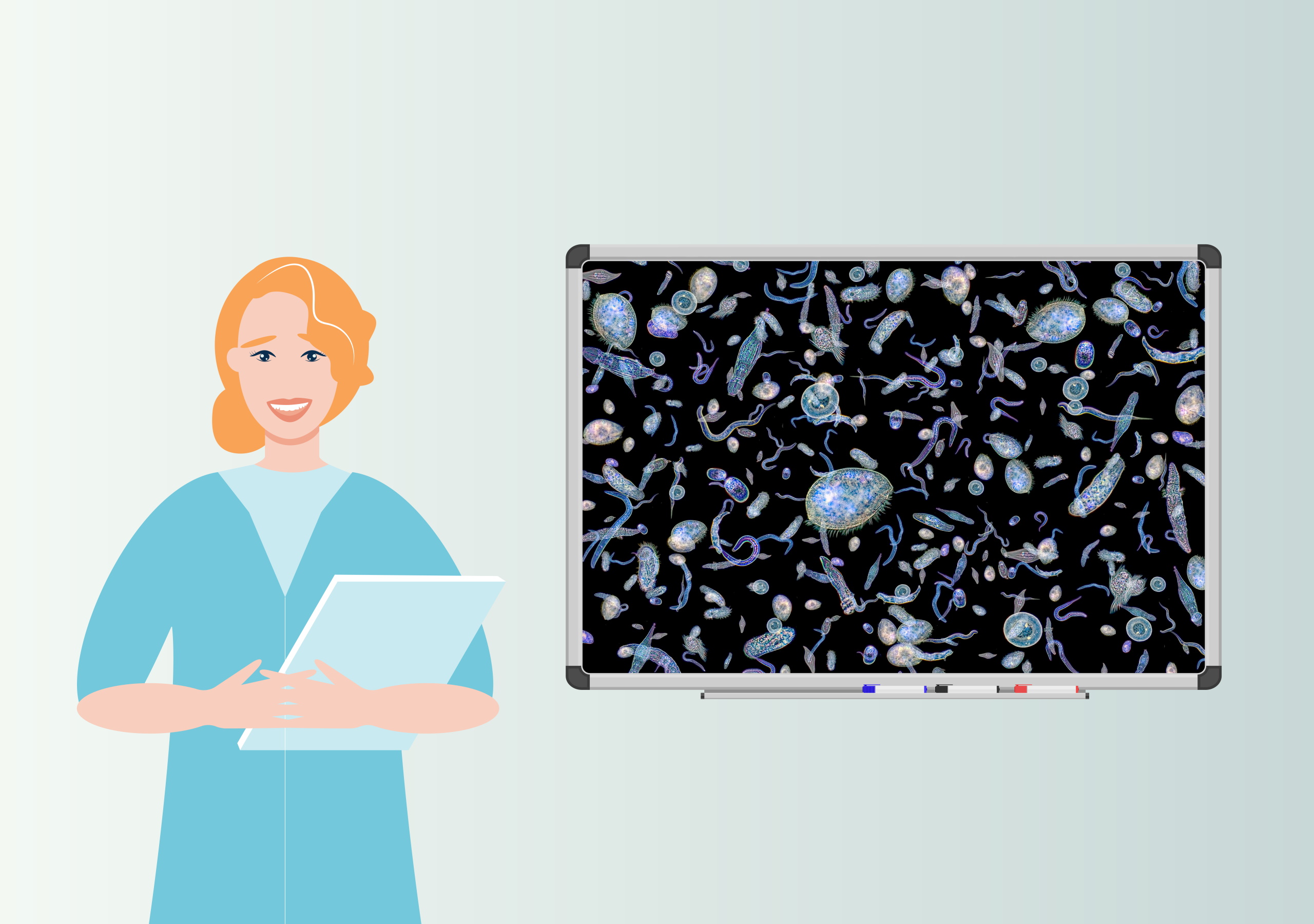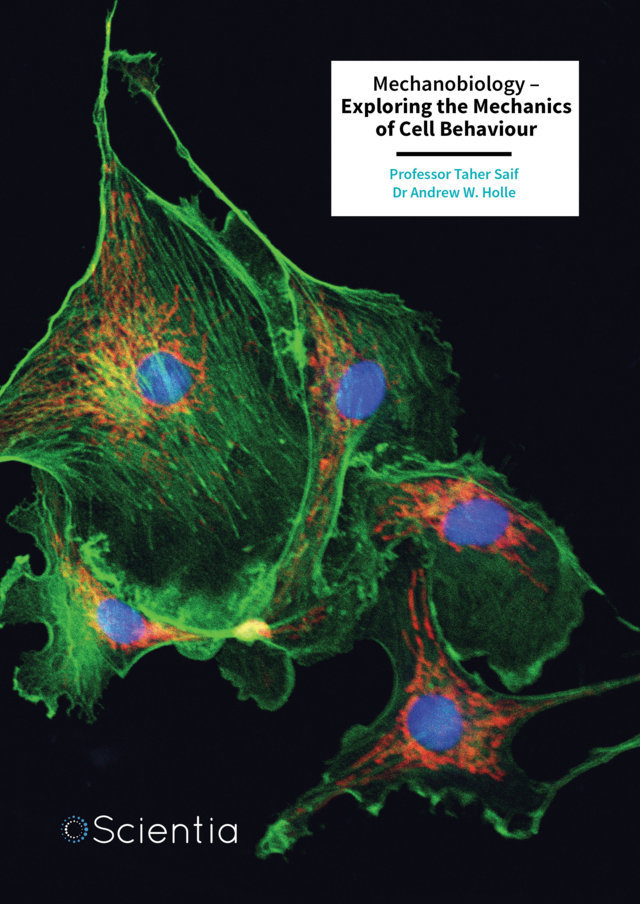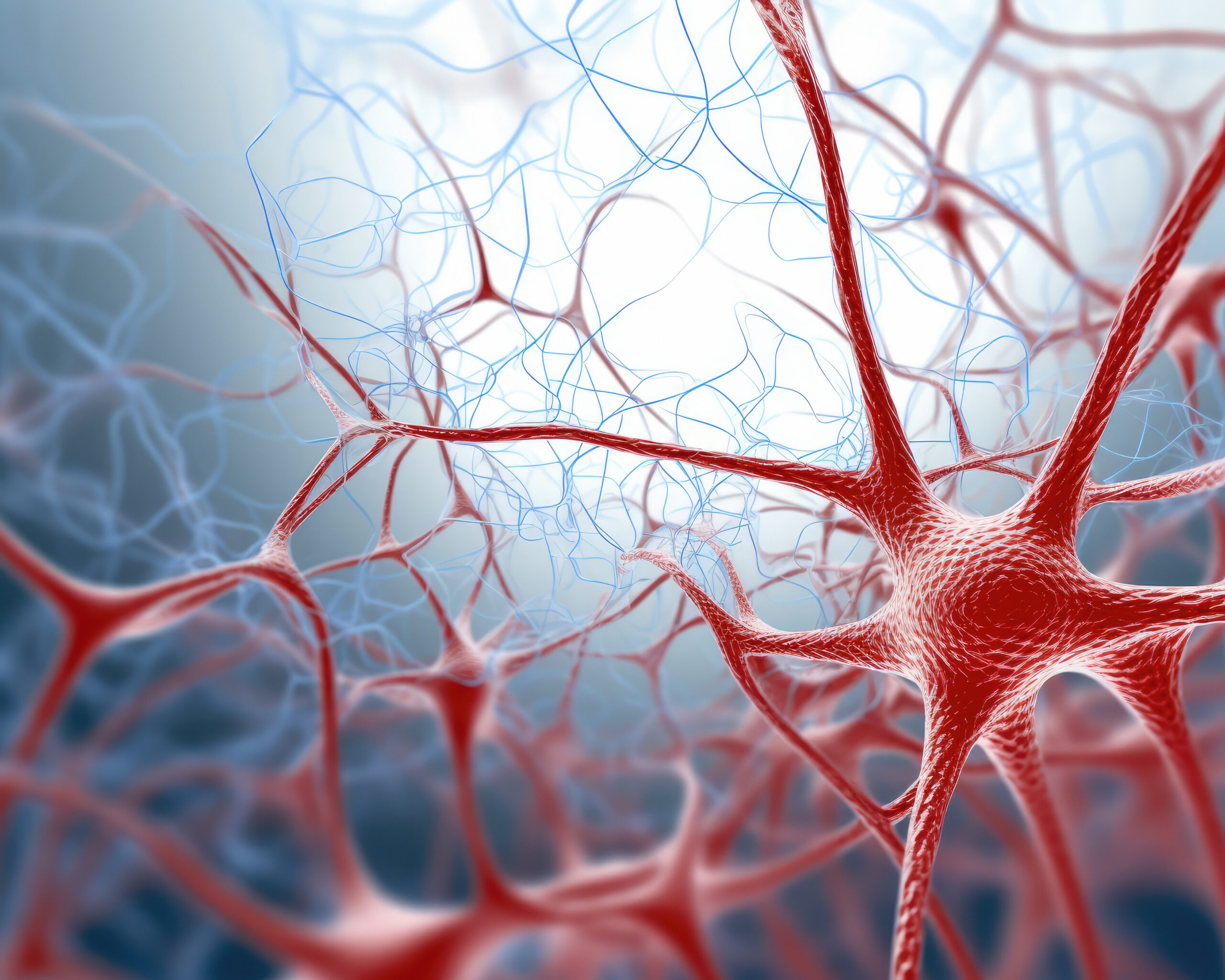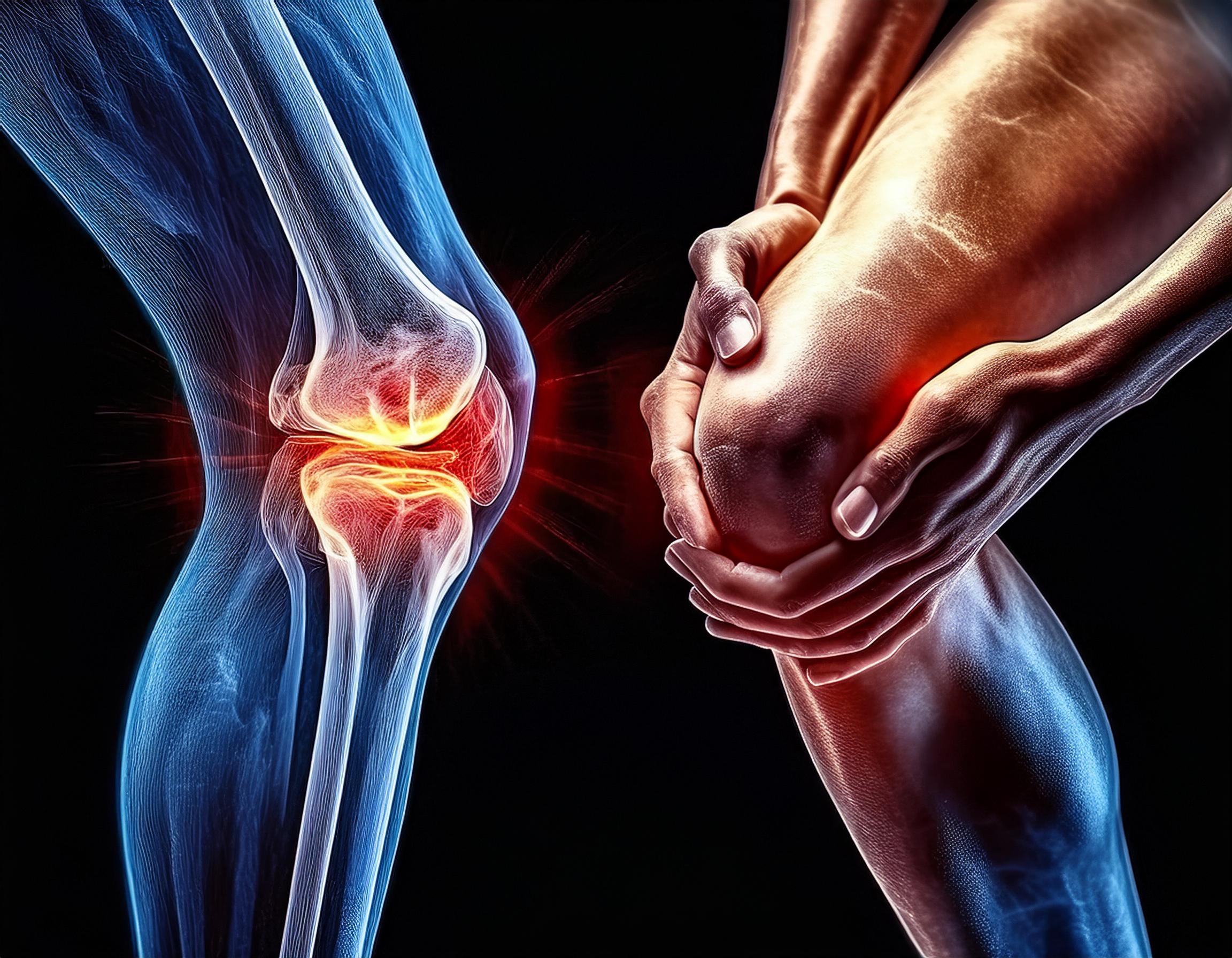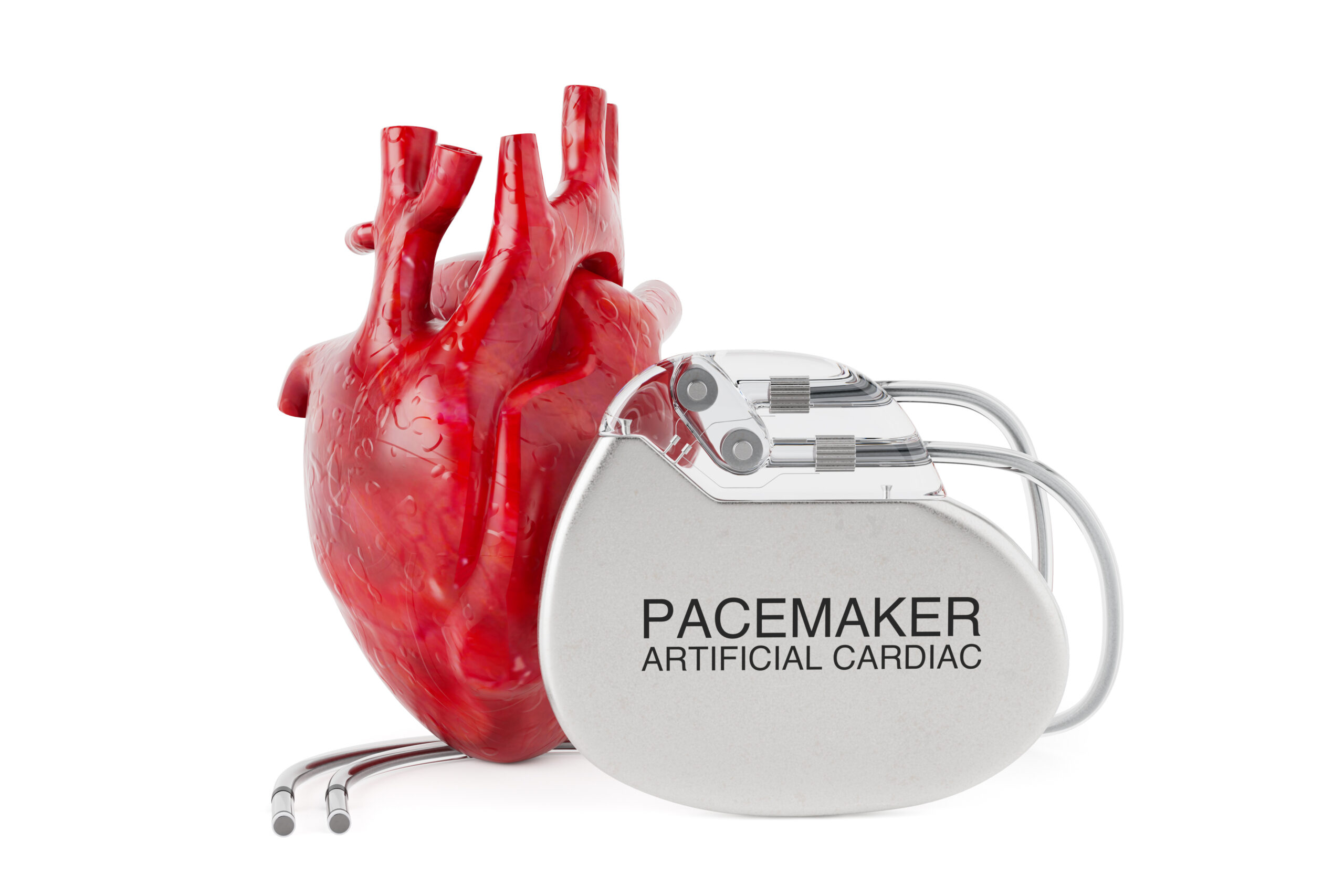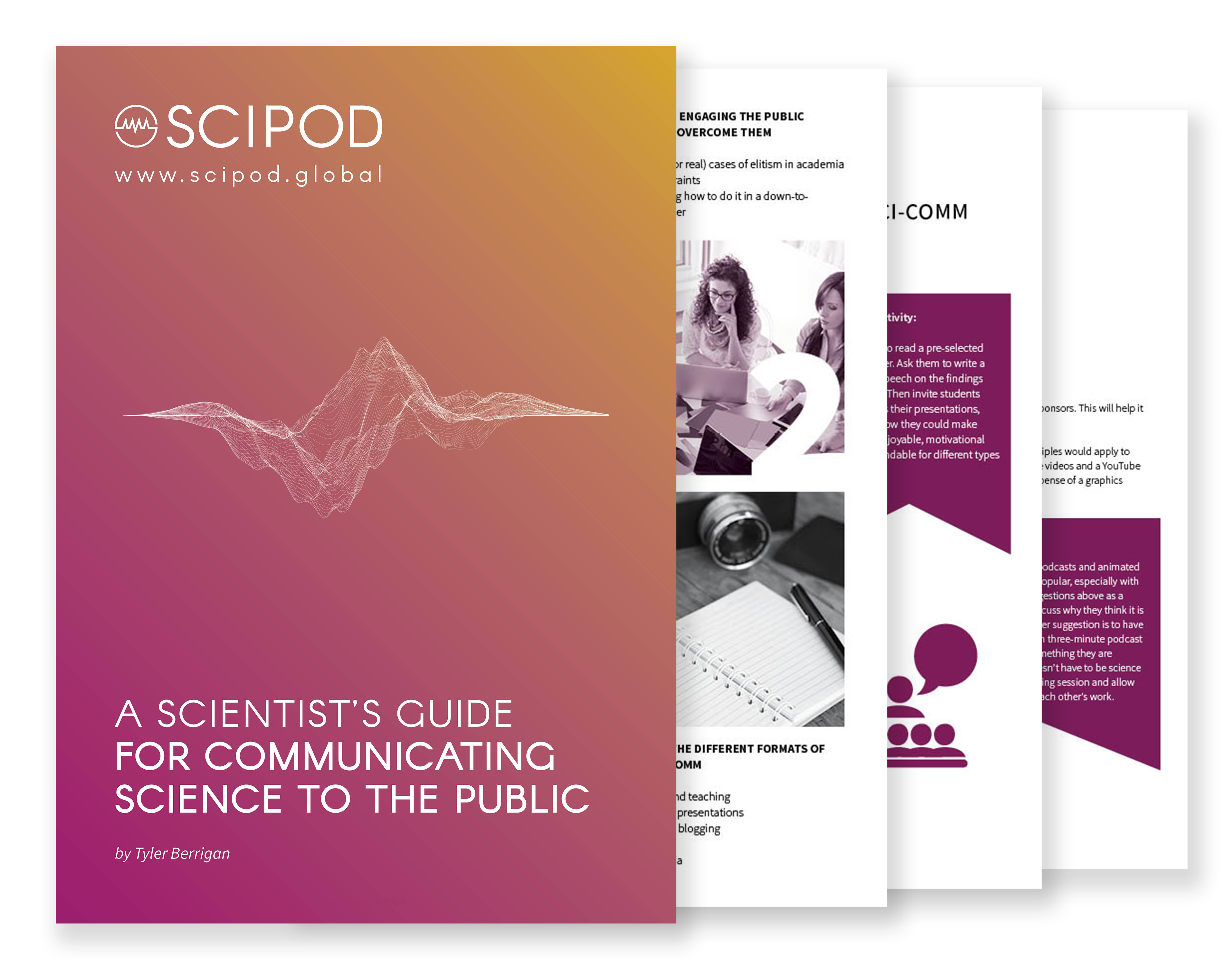Welcome to SciComm Radio
An exclusive interview series with leading scientists and science communicators

Click Below To Listen To A SciPod Radio Episode
Dr. Yassir Mahgoub | New Insights into Severe Depression Towards a Breakthrough in Treatment
Audiobook
About this episode
Associate Professor Yassir Mahgoub and his team at Penn State University have uncovered an important link between melancholia – a severe form of depression that often doesn’t respond to treatment – and catatonia – a condition characterized by abnormal movements and associated with schizophrenia. The researchers analyzed case studies involving six patients who had been hospitalized for severe depression. All six patients experienced significant relief from their depressive symptoms by taking lorazepam – a drug typically used to treat catatonia. This discovery reveals a potential new avenue for treating severe, treatment-resistant depression. More
Original Article Reference
This SciPod is a summary of the paper: ‘Catatonia and melancholia interface: exploring a new paradigm for evaluation and treatment. A case series and literature review’, in Frontiers in Psychiatry, https://doi.org/10.3389/fpsyt.2024.1372136
Contact
For further information, you can connect with Dr. Yassir Mahgoub at Ymahgoub@pennstatehealth.psu.edu
This work is licensed under a Creative Commons Attribution 4.0 International License. 
What does this mean?
Share: You can copy and redistribute the material in any medium or format
Adapt: You can change, and build upon the material for any purpose, even commercially.
Credit: You must give appropriate credit, provide a link to the license, and indicate if changes were made.
Increase The Impact Of Your Research!
More episodes
Prof. Nelson Gekara | The Guardians of the Gut: A New Frontier in the Defence Against Viruses
Audiobook
About this episode
Our gut contains a sleepless army, creating a hostile environment for pathogens, and helping to fortify our body’s immune defences. It may surprise you to learn that this army isn’t even human in nature, but is bacterial. The trillions of bacteria that naturally live in our gut, known as the gut microbiota, form an important component of our overall immunity against infectious disease. While bacteria can also cause disease, beneficial bacteria naturally colonise available spaces in our body, such as the gut, and play a key role in our immunity and physiology. Research conducted by Prof. Nelson Gekara of Stockholm University in Sweden and colleagues has revealed that these microscopic organisms play a crucial role in protecting us from viral infections, even in organs that are unconnected to the gut. Their study, published in the journal Immunity, uncovers a fascinating link between the gut microbiota and our body’s ability to fight viruses, offering new insights into immune function and the unintended consequences of antibiotic use. More
Original Article Reference
This Audio is a summary of the paper ‘The gut microbiota prime systemic antiviral immunity via the cGAS-STING-IFN-I axis’, in Immunity, https://doi.org/10.1016/j.immuni.2022.04.006
Contact
For further information, you can connect with Prof. Nelson Gekara at Stockholm University Sweden (at nelson.gekara@su.se) or at the University Medical Center Freiburg Germany (at nelson.ongondo.gekara@uniklinik-freiburg.de).
This work is licensed under a Creative Commons Attribution 4.0 International License. 
What does this mean?
Share: You can copy and redistribute the material in any medium or format
Adapt: You can change, and build upon the material for any purpose, even commercially.
Credit: You must give appropriate credit, provide a link to the license, and indicate if changes were made.
Increase The Impact Of Your Research!
More episodes
Defending Authentic Leadership: A Response to Critical Claims
Audiobook
About this episode
A recent paper from Professor William Gardner at Texas Tech University and Professor Kelly Davis McCauley at West Texas A&M University challenges a critique that characterized authentic leadership theory as “wrong” and “perilous.” Their analysis demonstrates how misrepresentations of the theory can undermine valuable leadership approaches, while highlighting the empirical support and practical benefits of leaders striving for authenticity in organizational settings. More
Original Article Reference
This SciPod is a summary of the paper ‘The gaslighting of authentic leadership’ from Leadership, https://doi.org/10.1177/17427150221111056
Contact
For further information, you can connect with Professor William L. Gardner at william.gardner@ttu.edu
This work is licensed under a Creative Commons Attribution 4.0 International License. 
What does this mean?
Share: You can copy and redistribute the material in any medium or format
Adapt: You can change, and build upon the material for any purpose, even commercially.
Credit: You must give appropriate credit, provide a link to the license, and indicate if changes were made.
Increase The Impact Of Your Research!
More episodes
Prof. Diana Jaalouk | Editing DNA and Degrading Proteins: The Tools to Achieve Precision Oncology
Audiobook
About this episode
Cancer is a daunting healthcare challenge, and is still affecting millions worldwide, despite the enormous research resources that have been directed at finding effective treatments over the past decades. Many anti-cancer treatments remain poorly specific for the tumours they are intended to treat, and often suffer from modest efficacy and serious off-target effects. Part of the problem is the inherent variability between many tumours and their resulting unpredictable responses to standard chemotherapy. However, the latest advancements in precision oncology may be the start of a new paradigm, potentially providing targeted therapeutic payloads that can successfully address the specific and unique issues underlying a given patient’s cancer. Researchers such as Prof. Diana Jaalouk and her colleagues at the American University of Beirut in Lebanon are pioneering innovative tools that are changing the way we understand and treat this complex disease. Two remarkable recent technologies, CRISPR-Cas9 and PROteolysis TArgeting Chimeras (or PROTACs for short), are at the forefront of this precision revolution. While distinct in their approach, these tools share a common goal: targeting cancer with precision and minimizing harm to healthy cells. Together, they are set to reshape the therapeutic landscape. More
Original Article Reference
This Audio is a summary of the paper ‘Precision oncology revolution: CRISPR-Cas9 and PROTAC technologies unleashed’, in Frontiers in Genetics, https://doi.org/10.3389/fgene.2024.1434002
Contact
For further information, you can connect with Prof. Diana Jaalouk at dj11@aub.edu.lb
This work is licensed under a Creative Commons Attribution 4.0 International License. 
What does this mean?
Share: You can copy and redistribute the material in any medium or format
Adapt: You can change, and build upon the material for any purpose, even commercially.
Credit: You must give appropriate credit, provide a link to the license, and indicate if changes were made.
Increase The Impact Of Your Research!
More episodes
Dr. Adeniyi Charles Adeola | Beyond Chickens: Unlocking the Hidden Treasures of Nigeria’s Poultry
Audiobook
About this episode
When most of us think about poultry, our minds often turn to chickens, the staple of farms and dinner tables worldwide. However, Nigeria is home to several other fascinating types of poultry beyond the humble chicken that have played significant roles in the country’s agriculture, culture, and economy. While these poultry species are firmly embedded in the Nigerian agricultural system, the history of how and when these animals came to be domesticated and where these populations originally derived from is often obscure. Recent research conducted by Dr. Adeniyi Charles Adeola of the Chinese Academy of Sciences, and colleagues, has shed new light on three often-overlooked poultry species, the Muscovy duck, the domestic pigeon, and the helmeted guinea fowl. These birds not only offer valuable genetic resources but also hold keys to food security, sustainable farming, and biodiversity conservation. More
Original Article Reference
This Audio is a summary of the papers ‘Genetic diversity and population structure of muscovy duck (Cairina moschata) from Nigeria’, in PeerJ, https://doi.org/10.7717/peerj.13236, ‘Genetic diversity in pigeon (Columba livia domestica) from three agro-ecological zones in Nigeria, in Gene Reports, https://doi.org/10.1016/j.genrep.2025.102154 and ‘Genomic Analyses Unveil Helmeted Guinea Fowl (Numidal meleagris) Domestication in West Africa’, in Genome Biol. Evol, https://doi.org/10.1093/gbe/evab090
Contact
For further information, you can connect with Dr Adeniyi Charles Adeola at chadeola@mail.kiz.ac.cn
This work is licensed under a Creative Commons Attribution 4.0 International License. 
What does this mean?
Share: You can copy and redistribute the material in any medium or format
Adapt: You can change, and build upon the material for any purpose, even commercially.
Credit: You must give appropriate credit, provide a link to the license, and indicate if changes were made.
Increase The Impact Of Your Research!
More episodes
Evaluating the Impact of University Chaplains: A Two-Phase Research Study
Audiobook
About this episode
Research from Dr Christopher W. B. Stephens and Sue Miller at the Susanna Wesley Foundation, Southlands College, Roehampton, reveals how university chaplains can effectively evaluate and demonstrate their impact within higher education institutions. Their work shows how chaplains can meet institutional demands for accountability while maintaining the unique spiritual and pastoral nature of their work, offering insights into evaluating the distinctive aspects of chaplaincy services. More
Original Article Reference
This SciPod is a summary of two papers titled ‘Assessing Impact Amongst Chaplains in a University Setting: Phase One of an Action Research Project’, https://doi.org/10.1177/15423050241228302, and ‘Assessing Impact Amongst Chaplains in a University Setting: Phase Two of an Action Research Project’, https://doi.org/10.1177/15423050241228305, both in the Journal of Pastoral Care & Counseling.
Contact
For further information, you can connect with Dr Christopher W. B. Stephens at SWF@roehampton.ac.uk
This work is licensed under a Creative Commons Attribution 4.0 International License. 
What does this mean?
Share: You can copy and redistribute the material in any medium or format
Adapt: You can change, and build upon the material for any purpose, even commercially.
Credit: You must give appropriate credit, provide a link to the license, and indicate if changes were made.
Increase The Impact Of Your Research!
More episodes
Dr. Erin Berthold | Plant-Based but Powerful: The Hidden Interactions Between Kratom and CBD
Audiobook
About this episode
In recent years, natural products such as kratom, which derives from a Southeast Asian tree called Mitragyna speciosa, and cannabidiol (or CBD) which derives from the Cannabis plant, have gained significant popularity for their potential to relieve anxiety, manage pain, and enhance mood. While both substances are often praised by users for their plant-based origins, and are often considered safer than synthetic pharmaceuticals as a result, the scientific community is working to uncover the complexities behind how these compounds interact, not just with the human body but with each other. After all, plant-based compounds are still active, and have the same potential for benefit and harm as any drug. People who use kratom are also more likely to use CBD, meaning that they could potentially experience a drug interaction if both substances are ingested around the same time. A recent study by Dr. Erin Berthold and her colleagues at the University of Florida sheds new light on the pharmacokinetic interactions between kratom and CBD, revealing findings that are both fascinating and important for public health. More
Original Article Reference
This Audio is a summary of the paper ‘Pharmacokinetic Interaction of Kratom and Cannabidiol in Male Rats’, in Pharmaceutics, https://doi.org/10.3390/pharmaceutics16030318
Contact
For further information, you can connect with Dr. Erin Berthold at erincberthold@plantedinscience.com
This work is licensed under a Creative Commons Attribution 4.0 International License. 
What does this mean?
Share: You can copy and redistribute the material in any medium or format
Adapt: You can change, and build upon the material for any purpose, even commercially.
Credit: You must give appropriate credit, provide a link to the license, and indicate if changes were made.
Increase The Impact Of Your Research!
More episodes
Dr. Ben Sorum | The Brain’s Hidden Switches: The Power of Ultrasound in Neural Modulation
Audiobook
About this episode
We think of our brains as safe and secure within our skulls, and not easily influenced unless we consume a mind-altering substance, suffer a traumatic injury or undergo invasive brain surgery. However, recent research shows that our brain activity can be influenced non-invasively using nothing but sound and that this technique could have therapeutic potential. As a postdoctoral researcher at UC Berkeley, Dr. Ben Sorum began to think about these types of question while in the Lab of Dr. Stephen G. Brohawn. Now, Dr. Sorum’s current research at Cooper Medical School of Rowan University explores how ultrasound, which can be non-invasively administered from outside the brain and through the skull, can activate specialized proteins in brain cells, changing their activity. The technique, if further developed, may play a key role in the future of neuromodulation, a field with enormous potential for treating neurological disorders. More
Original Article Reference
This Audio is a summary of the papers ‘Ultrasound activates mechanosensitive TRAAK K+ channels through the lipid membrane’, in PNAS, https://doi.org/10.1073/pnas.2006980118
And
‘Tension activation of mechanosensitive two-pore domain K+ channels TRAAK, TREK-1, and TREK-2’, in Nature Communications, https://doi.org/10.1038/s41467-024-47208-5
Contact
For further information, you can connect with Prof. Ben Sorum MD, PhD at sorum@rowan.edu
This work is licensed under a Creative Commons Attribution 4.0 International License. 
What does this mean?
Share: You can copy and redistribute the material in any medium or format
Adapt: You can change, and build upon the material for any purpose, even commercially.
Credit: You must give appropriate credit, provide a link to the license, and indicate if changes were made.
Increase The Impact Of Your Research!
More episodes
Dr. Christopher Marinangeli | The Power of Plants: Making the Most of Plant-Based Proteins
Audiobook
About this episode
In recent years, plant-based diets have gained significant traction, not just among vegetarians and vegans but also among individuals looking to improve their health and reduce their environmental impact. Increasing public awareness of the role of animal food production in driving climate change, along with the potential health risks of consuming large amounts of animal foods has powered this phenomenon. However, one of the ongoing debates in nutrition revolves around protein, a crucial nutritional component, and the nutritional quality of various protein sources. Can plant-based protein sources provide sufficient, high-quality protein compared with animal-based protein sources in the context of a dietary pattern? The question relates to consumer awareness and education, as not all plant proteins are created equal, and replacing meat, diary, and other animal proteins with just one or two plant protein sources may not provide everything we need nutritionally. Rather, a mix of plant protein sources may be required as an adequate replacement for high quality animal protein. As consumers increasingly replace animal proteins with plant proteins, potentially without awareness of these issues, is the overall quality of the protein they are consuming decreasing? Dr. Christopher Marinangeli of Protein Industries Canada and his colleagues set out to answer this question in their research on the effects of increasing plant protein intake on protein quality and nutrient consumption among U.S. adults. More
Original Article Reference
This Audio is a summary of the paper ‘Effect of increasing plant protein intake on protein quality and nutrient intake of US adults, in Applied Physiology, Nutrition, and Metabolism, https://doi.org/10.1139/apnm-2022-0054
Contact
For further information, you can connect with Dr. Christopher Marinangeli at christopher@proteinsupercluster.ca
This work is licensed under a Creative Commons Attribution 4.0 International License. 
What does this mean?
Share: You can copy and redistribute the material in any medium or format
Adapt: You can change, and build upon the material for any purpose, even commercially.
Credit: You must give appropriate credit, provide a link to the license, and indicate if changes were made.
Increase The Impact Of Your Research!
More episodes
Associate Professor Nina Tahmasebi | A new approach for detecting changes in word meaning over time
Audiobook
About this episode
Words change their meanings over time, but tracking these changes has traditionally required painstaking manual analysis by linguists. In recent years, researchers have been using computational models to automatically detect when semantic change happens, and how much of a change has occurred. Recent research led by Associate Professor Nina Tahmasebi and her colleagues in the Change is Key! program introduces innovative computational methods for detecting qualitative features of semantic change, opening new possibilities for understanding language evolution at scale. More
Original Article Reference
This SciPod is a summary of the papers:
Pierluigi Cassotti, Stefano De Pascale, and Nina Tahmasebi. 2024. Using Synchronic Definitions and Semantic Relations to Classify Semantic Change Types. In Proceedings of the 62nd Annual Meeting of the Association for Computational Linguistics (Volume 1: Long Papers), pages 4539–4553, Bangkok, Thailand. Association for Computational Linguistics.
And
Francesco Periti, David Alfter, and Nina Tahmasebi. 2024. Automatically Generated Definitions and their utility for Modeling Word Meaning. In Proceedings of the 2024 Conference on Empirical Methods in Natural Language Processing, pages 14008–14026, Miami, Florida, USA. Association for Computational Linguistics.
And
Nina Tahmasebi, Lars Borin, & Adam Jatowt (2021). Survey of computational approaches to lexical semantic change detection. Language Science Press.
This work is licensed under a Creative Commons Attribution 4.0 International License. 
What does this mean?
Share: You can copy and redistribute the material in any medium or format
Adapt: You can change, and build upon the material for any purpose, even commercially.
Credit: You must give appropriate credit, provide a link to the license, and indicate if changes were made.
Increase The Impact Of Your Research!
More episodes
Dr. Oksana Komarenko and Dr. Gerardo Ramirez | Pressure Points: The Science of Performing When It Matters Most
Audiobook
About this episode
Performing at your best when it matters most is something a lot of people struggle with. You can prepare for days, even weeks, but the moment you step on stage, walk into an interview, or face a big audience, things shift. Suddenly, what felt solid in practice starts to slip. I’m Dr. Oksana Komarenko. I teach at Ball State University, and I’m also an opera singer. I know what it’s like to face high-pressure moments. During my first major solo recital, my hands started shaking so badly I could barely control them. Everything I had rehearsed felt just out of reach. And I’m not the only one. Research shows that over 77 percent of performers experience the same thing when the pressure is on. More
Original Article Reference
This Audio is a summary of the paper ‘High-pressure in music education: Understanding the phenomenon and empowering students’, in International Journal of Music Education, https://doi.org/10.1177/02557614241265907
Contact
For further information, you can connect with Dr. Oksana Komarenko at Okomarenko@bsu.edu
This work is licensed under a Creative Commons Attribution 4.0 International License. 
What does this mean?
Share: You can copy and redistribute the material in any medium or format
Adapt: You can change, and build upon the material for any purpose, even commercially.
Credit: You must give appropriate credit, provide a link to the license, and indicate if changes were made.
Increase The Impact Of Your Research!
More episodes
Do Security and Regulation Failures Put Women’s Health Data, Their Privacy and Even Their Safety at Risk?
Audiobook
About this episode
Recent research from Professor Maryam Mehrnezhad at the Information Security Department, Royal Holloway University of London and a team of researchers reveals widespread privacy, security and regulatory failings in female-oriented health technologies (also known as FemTech). The researchers’ comprehensive analysis demonstrates how current practices leave sensitive health information vulnerable, while highlighting an urgent need for reform across technical, legal and social dimensions of digital healthcare. More
Original Article Reference
This SciPod is a summary of the papers “Mind the FemTech gap: regulation failings and exploitative systems” in Frontiers, https://doi.org/10.3389/friot.2024.1296599, “Bluetooth security analysis of general and intimate health IoT devices and apps: the case of FemTech” in International Journal of Information Security, https://doi.org/10.1007/s10207-024-00883-3, and Caring for Intimate Data in Fertility Technologies in CHI ’21: Proceedings of the 2021 CHI Conference on Human Factors in Computing Systems, https://doi.org/10.1145/3411764.3445132.
Contact
For further information, you can connect with Professor Maryam Mehrnezhad at maryam.mehrnezhad@rhul.ac.uk
This work is licensed under a Creative Commons Attribution 4.0 International License. 
What does this mean?
Share: You can copy and redistribute the material in any medium or format
Adapt: You can change, and build upon the material for any purpose, even commercially.
Credit: You must give appropriate credit, provide a link to the license, and indicate if changes were made.
Increase The Impact Of Your Research!
More episodes
Dr. Beate Hoppe | Revealing the Secrets of Fish Health: Improving Research on Aging
Audiobook
About this episode
The African turquoise killifish, also called Nothobranchius furzeri, is a small, vibrant freshwater species that is making a big splash in aging research. With our aging populations, research into aging and the mechanisms underlying age-related health issues is increasingly important. Scientists in this valuable field prize the killifish because it has a significantly short lifespan at just six to twelve months, making it an ideal model to study age-related diseases. However, as research on this species grows, so does the need for better care and monitoring of their health. In fact, distinguishing between the natural effects of aging and other health issues in these fish, such as pathogens or disease, is crucial in accurately researching age-related phenomena. Moreover, identifying health issues in laboratory fish could help researchers to better maintain health in their fish stocks, improving both experimental results and animal welfare. This is where Dr. Beate Hoppe and her colleagues at the Leibniz Institute on Aging at the Fritz Lipmann Institute, Jena, Germany, step in, pioneering a comprehensive approach to monitoring and managing killifish health that could revolutionize laboratory fish research. More
Original Article Reference
This Audio is a summary of the paper ‘Comprehensive Colony Health Management and Emerging Pathogens of the Annual Killifish Species Nothobranchius furzeri’, in Journal of the American Association for Laboratory Animal Science, https://doi.org/10.30802/AALAS-JAALAS-23-000067
Contact
For further information, you can connect with Dr. Beate Hoppe at beate.hoppe@leibniz-fli.de
This work is licensed under a Creative Commons Attribution 4.0 International License. 
What does this mean?
Share: You can copy and redistribute the material in any medium or format
Adapt: You can change, and build upon the material for any purpose, even commercially.
Credit: You must give appropriate credit, provide a link to the license, and indicate if changes were made.
Increase The Impact Of Your Research!
More episodes
Prof. Jason Dana | The Confidence Conundrum: Why Unstructured Interviews Are Misleading
Audiobook
About this episode
Employers and other decision makers typically use interviews to make their final decision on candidates applying for important positions. The process begins by reviewing resumes, and checking references, before the final and typically most important act, the interview. Within mere minutes, an interviewer can form a strong impression of a candidate. For instance, this may run along the lines of “this person seems confident, articulate, and driven” or “this person does not represent themselves well, and likely won’t be a good fit”. By the end, the interviewer may feel that they truly understand the candidate. But what if that feeling is just an illusion? This is the question tackled by Prof. Jason Dana of Yale University and his colleagues in their research on unstructured interviews. Their findings challenge one of the most common hiring and admissions practices: the belief that sitting down with a candidate and having a free-flowing conversation reveals valuable insight. In reality, their study suggests that unstructured interviews often do more harm than good, leading decision-makers to rely on misleading impressions rather than objective facts. More
Original Article Reference
This Audio is a summary of the paper ‘Belief in the unstructured interview: The persistence of an illusion’, in Judgement and Decision Making, https://doi.org/10.1017/S1930297500003612
Contact
For further information, you can connect with Prof. Jason Dana at jason.dana@yale.edu
This work is licensed under a Creative Commons Attribution 4.0 International License. 
What does this mean?
Share: You can copy and redistribute the material in any medium or format
Adapt: You can change, and build upon the material for any purpose, even commercially.
Credit: You must give appropriate credit, provide a link to the license, and indicate if changes were made.
Increase The Impact Of Your Research!
More episodes
Dr. Ndukaku Omelu | Sustaining Colorectal Cancer Screening in an Uncertain Funding Landscape
Audiobook
About this episode
Colorectal cancer is a significant health challenge, and ranks as the second leading cause of cancer-related death and the third most common type of cancer in the United States, among men and women combined. Each year, over 52,000 people in the U.S. die from colorectal cancer, with more than 5,300 deaths occurring in California alone. While early detection of colorectal cancer through screening can significantly reduce both its incidence and mortality, ensuring that screening programs remain effective and sustainable is no small feat, particularly in the face of uncertain funding. This pressing issue is at the heart of recent research conducted by Dr. Ndukaku Omelu of the California Department of Public Health, and colleagues, who examined the sustainability of colorectal cancer screening strategies implemented through the California Colon Cancer Control Program (or C4P for short), with a particular focus on how these screening programs would fare in the absence of future C4P funding, a program funded by the Centers for Disease Control and Prevention (or CDC for short). More
Original Article Reference
This Audio is a summary of the paper ‘Examining the Sustainability of Core Capacity and Evidence-Based Interventions for FIT-Based CRC Screening: California Colorectal Cancer Control Program’, in Cancer Control, https://doi.org/10.1177/10732748241255218
Contact
For further information, you can connect with Dr Ndukaku Omelu at Ndukaku.omelu@cdph.ca.gov
This work is licensed under a Creative Commons Attribution 4.0 International License. 
What does this mean?
Share: You can copy and redistribute the material in any medium or format
Adapt: You can change, and build upon the material for any purpose, even commercially.
Credit: You must give appropriate credit, provide a link to the license, and indicate if changes were made.
Increase The Impact Of Your Research!
More episodes
Dr. Luc Raijmakers | Comparing Simplified Physics-Based Models for Lithium-Ion Batteries
Audiobook
About this episode
In order to operate safely and efficiently, lithium-ion batteries rely on battery management systems to monitor their state and to control their operation. An essential part of this process is modelling battery behaviour under different conditions to predict performance and prevent failures. To do this efficiently, it is crucial to simplify the underlying physical processes, while sacrificing as little accuracy as possible. Through their research, Dr. Luc Raijmakers and colleagues at the Jülich Research Centre, Germany, compare various different approaches to simplifying simulations. Their results could make it easier for battery operators to decide which approach is best suited to their requirements for accuracy and computational efficiency. More
Original Article Reference
This Audio is a summary of the paper ‘A comparison between physics-based Li-ion battery models’, in Electrochimica Acta, doi.org/10.1016/j.electacta.2024.144360
Contact
For further information, you can connect with Dr. Luc Raijmakers at l.raijmakers@fz-juelich.de
This work is licensed under a Creative Commons Attribution 4.0 International License. 
What does this mean?
Share: You can copy and redistribute the material in any medium or format
Adapt: You can change, and build upon the material for any purpose, even commercially.
Credit: You must give appropriate credit, provide a link to the license, and indicate if changes were made.
Increase The Impact Of Your Research!
More episodes
Professor Joanne Wood | A more complex view of how self-esteem shapes romantic relationships
Audiobook
About this episode
Research by Professor Joanne Wood at the University of Waterloo reveals how self-esteem influences romantic relationships through a chain of psychological and behavioral effects. Their work challenges simple explanations and demonstrates how one partner’s self-worth can create ripple effects that impact both partners’ relationship satisfaction. More
Original Article Reference
This SciPod is a summary of the paper ‘Self-esteem and romantic relationship quality’ published in Nature Reviews Psychology, https://doi.org/10.1038/s44159-023-00247-z
Contact
For further information, you can connect with Professor Joanne Wood at jwood@uwaterloo.ca
This work is licensed under a Creative Commons Attribution 4.0 International License. 
What does this mean?
Share: You can copy and redistribute the material in any medium or format
Adapt: You can change, and build upon the material for any purpose, even commercially.
Credit: You must give appropriate credit, provide a link to the license, and indicate if changes were made.
Increase The Impact Of Your Research!
More episodes
Professor Denise Troutman | Rethinking ‘Sassy’: The Complex Intersections of Race, Gender, and Linguistic Politeness
Audiobook
About this episode
Research by Professor Denise Troutman at Michigan State University examines how race, gender, and social context shape perceptions of politeness and impoliteness in language, particularly focusing on the term ‘sassy’ when applied to African American women and girls. The research challenges traditional theories of politeness and reveals a need for cultural contextualizations to avert harmful stereotypes. More
Original Article Reference
This SciPod is a summary of the paper ‘Sassy Sasha?: The intersectionality of (im)politeness and sociolinguistics’ published in Politeness Research, https://doi.org/10.1515/pr-2019-0005
Contact
For further information, you can connect with Professor Denise Troutman at troutma1@msu.edu
This work is licensed under a Creative Commons Attribution 4.0 International License. 
What does this mean?
Share: You can copy and redistribute the material in any medium or format
Adapt: You can change, and build upon the material for any purpose, even commercially.
Credit: You must give appropriate credit, provide a link to the license, and indicate if changes were made.
Increase The Impact Of Your Research!
More episodes
Dr. Marina Danalache | From Shield to Shreds: Enzymes and the Breakdown of Cartilage Cocoons in Osteoarthritis
Audiobook
About this episode
Friction is no fun, and moving our joints freely and without pain requires that it is minimised as much as possible. Cartilage is the cushiony, slippery and translucent tissue that lines the ends of our long bones and acts as a lubricating layer within our joints to make their movements smooth and effortless, or at least that’s the theory. For millions of people, ease of joint movement is painfully disrupted by osteoarthritis, a condition that gradually and progressively erodes this protective and functional cartilage layer and leads to pain, stiffness, and reduced mobility. No fun at all. The work of Dr. Marina Danalache of the Department of Orthopedic Surgery at the University Hospital of Tübingen, Germany, and her colleagues sheds new light on how this cartilage breakdown begins and proceeds. Meet matrix metalloproteinase enzymes (or MMPs for short): master regulators of cartilage remodelling, balancing renewal and destruction. In osteoarthritis, this equilibrium shifts – the researchers are decoding their precise roles aiming to unlock targeted interventions and transformative therapies. More
Original Article Reference
This Audio is a summary of the paper ‘Proteolysis of the pericellular matrix: Pinpointing the role and involvement of matrix metalloproteinases in early osteoarthritic remodeling’, in Acta Biomaterialia, https://doi.org/10.1016/j.actbio.2024.05.002
Contact
For further information, you can connect with Dr. Marina Danalache at Marina.Danalache@med.uni-tuebingen.de
This work is licensed under a Creative Commons Attribution 4.0 International License. 
What does this mean?
Share: You can copy and redistribute the material in any medium or format
Adapt: You can change, and build upon the material for any purpose, even commercially.
Credit: You must give appropriate credit, provide a link to the license, and indicate if changes were made.
Increase The Impact Of Your Research!
More episodes
Professor William Heddle | Reducing the Hidden Risks of Life-Saving Heart Devices
Audiobook
About this episode
Each year, thousands of Australians undergo a procedure to have a cardiac device implanted. These devices, such as pacemakers and defibrillators, help to regulate the heartbeat. Such cardiac implantable electronic devices (or CIEDs for short) are vital for many patients, ensuring that their hearts function properly and preventing life-threatening conditions. However, as Professor William Heddle of Flinders University, Adelaide, Australia, a leading expert in cardiology, points out in a recent Editorial article in the Medical Journal of Australia, these procedures are not without risks, particularly the risk of infection. Prof. Heddle’s Editorial primarily focuses on a recent study conducted in New South Wales, Australia, which sheds light on the factors that increase the risk of CIED-related infections and offers insights into how these risks can be minimized. More
Original Article Reference
This Audio is a summary of the Editorial ‘Averting infections when implanting cardiac pacemakers and defibrillators’, https://doi.org/10.5694/mja2.52305, and the paper ‘Factors associated with cardiac implantable electronic device-related infections, New South Wales, 2016–21: a retrospective cohort study’, https://doi.org/10.5694/mja2.52302, both in Medical Journal of Australia
Contact
For further information, you can connect with Professor William Heddle at bill.heddle@flinders.edu.au
This work is licensed under a Creative Commons Attribution 4.0 International License. 
What does this mean?
Share: You can copy and redistribute the material in any medium or format
Adapt: You can change, and build upon the material for any purpose, even commercially.
Credit: You must give appropriate credit, provide a link to the license, and indicate if changes were made.
Increase The Impact Of Your Research!
More episodes
Pollinator Peril: How Common Agricultural Cocktails Harm Honeybees
Audiobook
About this episode
Pollinators, including honey bees, wild bees, butterflies and many other insects, are some of the most important creatures on our planet. By pollinating plants, both wild and cultivated, they have an essential role in maintaining wider ecosystems and ensuring our food security. However, we have come to take them for granted, and don’t fully appreciate their function in ensuring our ongoing survival. Insects are declining at a truly alarming rate. Among other factors human activities such as industrial farming and corresponding insecticide and fungicide use over large areas of land to protect food crops against pests and disease are considered to be major contributors. Many different pesticides have also been detected in honeybee colonies. Scientists are attempting to uncover the specific factors involved in insect decline, before it’s too late. Recent research by Sarah Manzer and colleagues in the research groups of Prof. Ricarda Scheiner and Prof. Ingolf Steffan-Dewenter at the Julius Maximilians Universität Würzburg in Germany has shed new light on a potential culprit: a combination of insecticides and fungicides commonly used in agriculture. More
Original Article Reference
This Audio is a summary of the paper ‘The neonicotinoid acetamiprid reduces larval and adult survival in honeybees (Apis mellifera) and interacts with a fungicide mixture’, in Environmental Pollution, https://doi.org/10.1016/j.envpol.2024.124643
Contact
For further information, you can connect with Sarah Manzer at sarah.manzer@uni-wuerzburg.de and Prof. Dr. Ricarda Scheiner at ricarda.scheiner@uni-wuerzburg.de
This work is licensed under a Creative Commons Attribution 4.0 International License. 
What does this mean?
Share: You can copy and redistribute the material in any medium or format
Adapt: You can change, and build upon the material for any purpose, even commercially.
Credit: You must give appropriate credit, provide a link to the license, and indicate if changes were made.
Increase The Impact Of Your Research!
More episodes
Prof. Dr. Ralf Klessen | Reviewing the formation of the universe’s first stars
Audiobook
About this episode
Before the universe was illuminated by stars, most of its observable matter existed in a roughly even distribution of hydrogen and helium. As these materials collapsed under their own gravity, they would have heated up, initially preventing them from collapsing further to densities high enough for stars to form. As part of a new review, Prof. Dr. Ralf Klessen and Prof. Dr. Simon Glover at Heidelberg University investigate the chemical mechanisms which enabled this primordial gas to cool and fragment to form the universe’s first generation of stars. More
Original Article Reference
This Audio is a summary of section 3.2 of the paper ‘The First Stars: Formation, Properties, and Impact’, in Annual Review of Astronomy and Astrophysics, doi.org/10.1146/annurev-astro-071221-053453
Contact
For further information, you can connect with Prof. Dr. Ralf Klessen at klessen@uni-heidelberg.de
This work is licensed under a Creative Commons Attribution 4.0 International License. 
What does this mean?
Share: You can copy and redistribute the material in any medium or format
Adapt: You can change, and build upon the material for any purpose, even commercially.
Credit: You must give appropriate credit, provide a link to the license, and indicate if changes were made.
Increase The Impact Of Your Research!
More episodes
Professor Carsten Herrmann-Pillath and Professor Guo Man | How death rituals are changing in China’s fastest-growing city
Audiobook
About this episode
Research from Professor Carsten Herrmann-Pillath at the University of Erfurt and Professor Guo Man at Harbin Institute of Technology Shenzhen Campus reveals how traditional funeral practices are being transformed in Shenzhen, an area of China which has rapidly developed into a huge metropolis. The research shows how government regulations, economic forces, and cultural traditions interact to create new forms of death rituals that balance modern urban constraints with deep-rooted customs. More
Original Article Reference
This SciPod is a summary of the paper ‘The Cultural Governance of Death in Shenzhen’ from The China Quarterly, https://doi.org/10.1017/S0305741022001898
The research was funded by the Deutsche Forschungsgemeinschaft (DFG, German Research Foundation) – Project-ID 424638267 – TRR 294 “Structural change of property”
Contact
For further information, you can connect with Professor Carsten Herrmann-Pillath at carsten.herrmann-pillath@uni-erfurt.de
This work is licensed under a Creative Commons Attribution 4.0 International License. 
What does this mean?
Share: You can copy and redistribute the material in any medium or format
Adapt: You can change, and build upon the material for any purpose, even commercially.
Credit: You must give appropriate credit, provide a link to the license, and indicate if changes were made.
Increase The Impact Of Your Research!
More episodes
Dr. Zhe Su | Understanding the twisted tectonics of the Sichuan basin
Audiobook
About this episode
The Sichuan basin in southern China is a region of deep geological and seismological complexity, which has so far prevented researchers from understanding its tectonic past. Through fresh analysis of previous observations, combined with the latest modelling techniques, a team led by Dr. Zhe Su at the National Institute of Natural Hazards, Beijing, suggests for the first time that the entire Sichuan basin is slowly rotating. Their result could explain the origins of one of the deadliest earthquakes in living memory, and could also help seismologists to better predict when earthquakes will strike the region in the future. More
Original Article Reference
This Audio is a summary of the paper ‘The Origin of Seismic and Tectonic Activity Underlying the Sichuan Basin, Central China’, in Tectonics, https://doi.org/10.1029/2022TC007629
Contact
For further information, you can connect with Dr Zhe Su at zhesu@ninhm.ac.cn
This work is licensed under a Creative Commons Attribution 4.0 International License. 
What does this mean?
Share: You can copy and redistribute the material in any medium or format
Adapt: You can change, and build upon the material for any purpose, even commercially.
Credit: You must give appropriate credit, provide a link to the license, and indicate if changes were made.
Increase The Impact Of Your Research!
More episodes
Dr. Robin Temmerman | Healthy Pets, Safer Humans: A Positive Step Forward for Veterinary Science
Audiobook
About this episode
Antibiotic resistance may prove to be one of the most significant health challenges we will face this century. As bacteria continue to evolve resistance mechanisms to our arsenal of antibiotics, infections could become a more serious prospect, and medical procedures with a substantial infection risk, such as open surgery, could become unacceptably risky. While antibiotic resistance is often considered to be a human problem, it’s also a growing issue in veterinary medicine. Our pets can also develop infections that are difficult to treat when resistant bacteria are involved. Moreover, as we frequently share a living space with such animals, there is potential for crossover of resistant bacteria to humans. In a far-reaching study, Dr. Robin Temmerman and his colleagues of the executive animal health study center (or CEESA), which is a consortium of animal health companies, shed light on this issue, exploring antibiotic resistance in bacterial urinary tract infections in dogs and cats across Europe. Their findings provide hope and a roadmap for tackling this global problem. More
Original Article Reference
This Audio is a summary of the paper ‘Antimicrobial Susceptibility of Canine and Feline Urinary Tract Infection Pathogens Isolated from Animals with Clinical Signs in European Veterinary Practices during the Period 2013–2018’, in Antibiotics, https://doi.org/10.3390/antibiotics13060500
Contact
For further information, you can connect with Dr Robin Temmerman at robin.temmerman@zoetis.com
This work is licensed under a Creative Commons Attribution 4.0 International License. 
What does this mean?
Share: You can copy and redistribute the material in any medium or format
Adapt: You can change, and build upon the material for any purpose, even commercially.
Credit: You must give appropriate credit, provide a link to the license, and indicate if changes were made.
Increase The Impact Of Your Research!
More episodes
Dr Patrick O’Neill | Revolutionising Pharmaceutical Synthesis with Continuous Flow Chemistry
Audiobook
About this episode
Dr Patrick O’Neill of Pfizer, Ireland, and Professor Jie Wu of the National University of Singapore, and their team, have made groundbreaking advancements in the synthesis of 1,2,3-triazole – a key building block in the manufacture of a life-saving antibiotic. Replacing traditional batch processes, they developed a safer, more efficient method using continuous flow chemistry, which addresses potential global supply chain vulnerabilities. This innovative approach eliminates hazardous intermediates, improves reaction safety, and ensures a stable supply of 1,2,3-triazole for global pharmaceutical production. More
Original Article Reference
This Audio is a summary of the paper ‘1,2,3-Triazole Synthesis: Development of Safe and Effective Batch and Continuous Manufacturing Processes’, in Organic Process Research & Development, doi.org/10.1021/acs.oprd.4c00020
Contact
For further information, you can connect with Dr Patrick O’Neill at pat.o’neill@pfizer.com
This work is licensed under a Creative Commons Attribution 4.0 International License. 
What does this mean?
Share: You can copy and redistribute the material in any medium or format
Adapt: You can change, and build upon the material for any purpose, even commercially.
Credit: You must give appropriate credit, provide a link to the license, and indicate if changes were made.
Increase The Impact Of Your Research!
More episodes
Dr. Ivan Schewitz | Pectus Excavatum: Minimally Invasive Repair, The Nuss Procedure
Audiobook
About this episode
For a long time, deformities of the chest wall, such as pectus excavatum, a condition where the chest appears to have sunken, remained untreated or were treated using crude and invasive techniques. However, thanks to innovations led by surgeons such as Prof. Donald Nuss of Eastern Virginia Medical School, these procedures have undergone a remarkable transformation. Such work has shifted the paradigm from radical surgery to minimally invasive solutions, changing lives and restoring confidence for countless patients. Now, a Review Article published in the African Journal of Thoracic and Critical Care Medicine, and co-authored by Prof. Donald Nuss and Dr. Ivan Schewitz of the Department of Cardiothoracic Surgery at the University of Pretoria, South Africa, charts the remarkable progress in treating pectus excavatum. More
Original Article Reference
This Audio is a summary of the paper ‘Challenging beliefs: A review of the paradigm shift in the treatment of pectus excavatum from radical resection to minimally invasive bracing and non-surgical vacuum bell suction’, in African Journal of Thoracic and Critical Care Medicine, https://doi.org/10.7196/AJTCCM.2020.v26i4.016
Contact
For further information, you can connect with Dr. Ivan Schewitz at ivan@schewitz.com
This work is licensed under a Creative Commons Attribution 4.0 International License. 
What does this mean?
Share: You can copy and redistribute the material in any medium or format
Adapt: You can change, and build upon the material for any purpose, even commercially.
Credit: You must give appropriate credit, provide a link to the license, and indicate if changes were made.
Increase The Impact Of Your Research!
More episodes
Dr. Mabrouka Abuhmida | From Shame to Support: Mental Health Stigma in Conservative Communities
Audiobook
About this episode
In many regions around the globe, common mental health issues are cloaked in secrecy by those who experience them, and are frequently stigmatized and misunderstood by others. This is a particularly serious issue in conservative communities, where cultural and religious values have significant effects on the provision and use of appropriate mental health care resources. In a new mini-review article published in the journal Frontiers in Public Health, Dr. Mabrouka Abuhmida, Dr. Wendy Booth and Dr. Felix Anyanwu of the University of South Wales in the UK, have explored this critical topic, revealing the damaging impact of stigma in such communities, and exploring new solutions to enable adequate mental healthcare in this context. More
Original Article Reference
This Audio is a summary of the paper ‘Mental health stigma: a conundrum for healthcare practitioners in conservative communities’, in Frontiers in Public Health, https://doi.org/10.3389/fpubh.2024.1384521
Contact
For further information, you can connect with Dr. Mabrouka Abuhmida at mabrouka.abuhmida@southwales.ac.uk
This work is licensed under a Creative Commons Attribution 4.0 International License. 
What does this mean?
Share: You can copy and redistribute the material in any medium or format
Adapt: You can change, and build upon the material for any purpose, even commercially.
Credit: You must give appropriate credit, provide a link to the license, and indicate if changes were made.
Increase The Impact Of Your Research!
More episodes
Dr. Claudia Ituarte-Lima – Dr. Radu Mares | How Latin America’s Groundbreaking Treaty Intersects with European Economic Law
Audiobook
About this episode
Research by Dr. Claudia Ituarte-Lima and Dr. Radu Mares at Lund University examines how a pioneering environmental agreement in Latin America and the Caribbean introduces new ways of protecting nature and human rights. Their study reveals both opportunities and challenges in how this regional treaty interacts with European Union trade laws, offering insights into how different regions can work together to protect the environment and strengthen democracy. More
Original Article Reference
This SciPod is a summary of the paper ‘Environmental democracy: Examining the interplay between Escazu Agreement’s innovations and EU economic law’ published in Earth System Governance, https://doi.org/10.1016/j.esg.2024.100208
Research for this paper was funded by the Swedish Environmental Protection Agency as part of the Biodiversa+ and Water JPI project Protecting Biodiversity through Regulating Trade and Business Relations.
Contact
For further information, you can connect with Dr Claudia Ituarte-Lima at claudia.ituarte-lima@rwi.lu.se/Linkedin and Professor Radu Mares at radu.mares@rwi.lu.se
This work is licensed under a Creative Commons Attribution 4.0 International License. 
What does this mean?
Share: You can copy and redistribute the material in any medium or format
Adapt: You can change, and build upon the material for any purpose, even commercially.
Credit: You must give appropriate credit, provide a link to the license, and indicate if changes were made.
Increase The Impact Of Your Research!
More episodes
Professor Will Greaves | How Donald Trump has changed Canada-US relations
Audiobook
About this episode
Research by Professor Will Greaves at the University of Victoria examines how the Trump presidency has impacted the long-standing security relationship between Canada and the United States. His analysis reveals concerning shifts in the foundations of bilateral cooperation and trust between these traditionally close allies, with implications for the future of North American security arrangements. More
Original Article Reference
This SciPod is a summary of the paper ‘Democracy, Donald Trump and the Canada-US Security Community’ published in the Canadian Journal of Political Science, https://doi.org/10.1017/S0008423920000542
Contact
For further information, you can connect with Professor Wilfrid Greaves at wgreaves@uvic.ca
This work is licensed under a Creative Commons Attribution 4.0 International License. 
What does this mean?
Share: You can copy and redistribute the material in any medium or format
Adapt: You can change, and build upon the material for any purpose, even commercially.
Credit: You must give appropriate credit, provide a link to the license, and indicate if changes were made.



